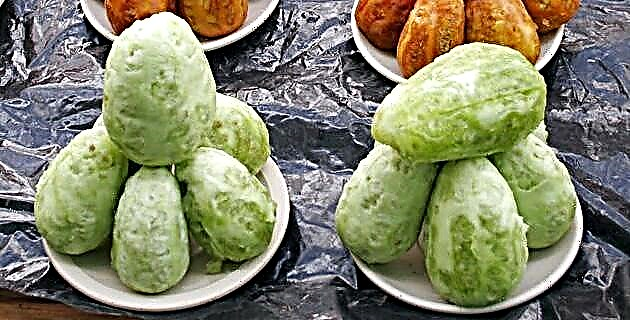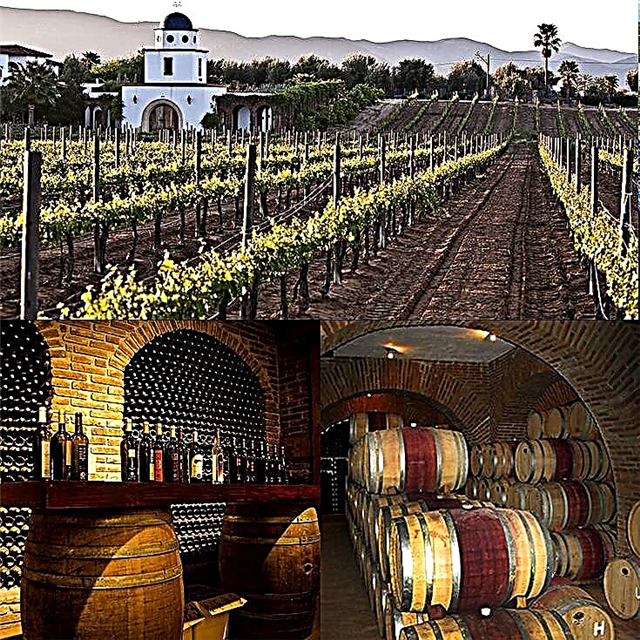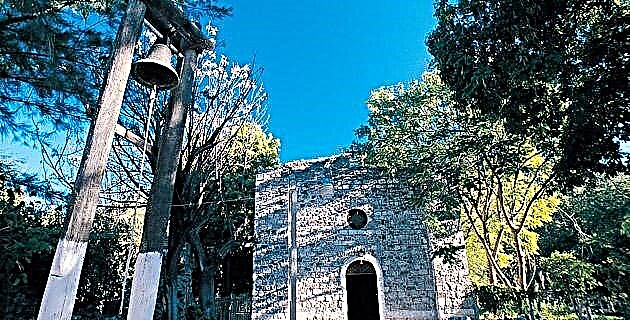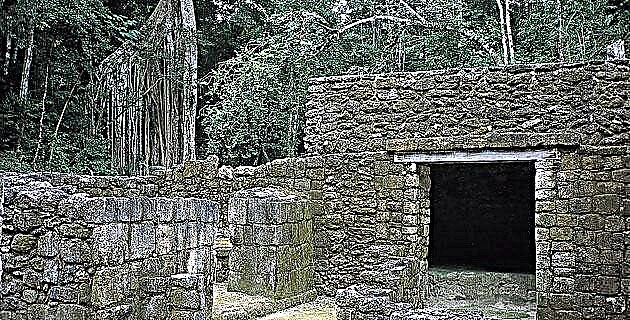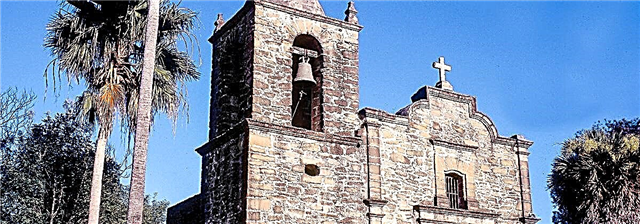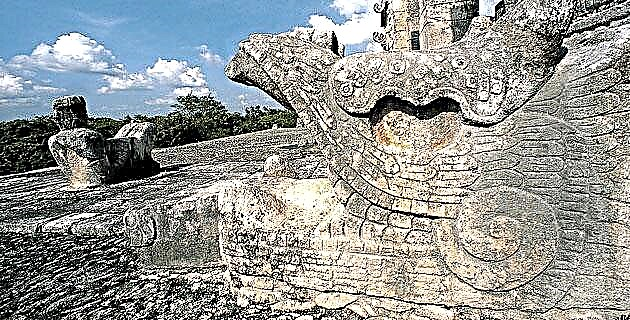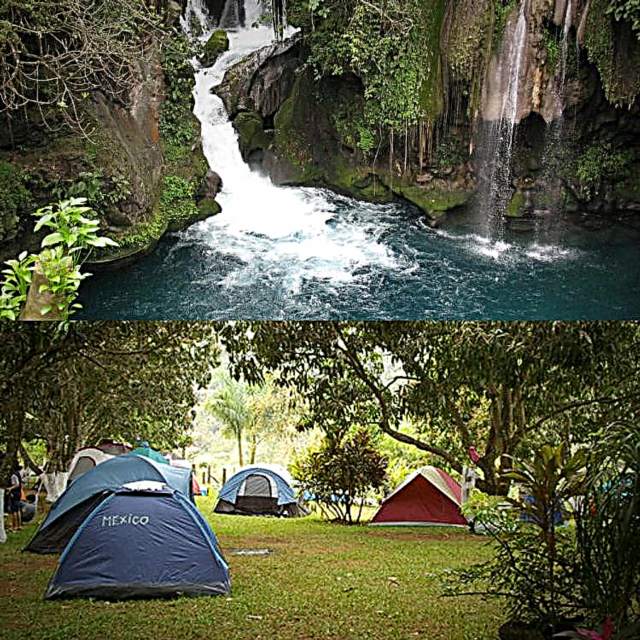Puente de Dios, in the municipality of Tamasopo, at one of the entrances to the Huasteca Potosina, is a natural wonder that is also surrounded by other enchanting places. We present this Complete Guide to Puente de Dios, with the aim that you do not miss any relevant information during your visit to the place, so that your stay is relaxing and pleasant.
1. What is it?
Puente de Dios is a site formed by a stream, natural pools and a cave, located in the municipality of Tamasopo in Potosí. It receives its name from a bridge formed in the natural rock that surrounds the pools. One of its great attractions is the effect produced by solar lighting inside the cavern, mainly on the rock formations and the water mirror.
2. Where is it located?
The municipality of Tamasopo is located in the Huasteca region of the state of San Luis Potosí and Puente de Dios is located in the El Cafetal Community, Ejido La Palma. Tamasopo limits by almost all its perimeter with Potosí municipalities; to the north with Ciudad del Maíz and El Naranjo; to the south with Santa Catarina and Lagunillas; to the east with Aquismón, Cárdenas and Ciudad Valles; and to the west with Alaquines and Rayón. Its only non-potosino border is with the Queretaro municipality of Jalpan de Serra, to the south.
3. What does "Tamasopo" mean and how did the town originate?
The term "Tamasopo" comes from the Huasteco word "Tamasotpe" which means "place that drips" a name that fell short, given the amount of water that circulates through the place. In pre-Hispanic times, the Huastecos settled in its territory, with some archaeological remains that confirm it. Its colonial past dates back to an old 16th century Franciscan settlement-mission, known in the past as San Francisco de la Palma. The current Tamasopo began to consolidate in the 19th century with the construction of the San Luis Potosí - Tampico railway.
4. How do I get to Puente de Dios?
The distance between the municipal seat of Tamasopo and Puente de Dios is just over 3 kilometers in a northwesterly direction. From Mexico City, the journey is 670 kilometers north and then northeast. Between the city of San Luis Potosí and Puente de Dios there are 250 kilometers, which are covered in approximately 3 hours. From Ciudad Valles, the route is 58 kilometers.
5. What are its attractions?
In the Puente de Dios area the waters form turquoise blue pools that constitute a natural spa. In the cavern, the sun's rays filter through crevices, illuminating the stalactites, stalagmites and rock columns, as well as the surface of the water, creating a rare impression of artificial lighting. From the site, tours can be made to know the surrounding nature.
6. What is the river that forms Puente de Dios?
Tamasopo is bathed by the waters of the river of the same name, which forms the waterfalls and pools that have made the municipality famous. Further on, the Tamasopo River joins its waters with those of the Damián Carmona River, forming the Gallinas River. This river forms the famous Tamul waterfall in the municipality of Aquismón, which at 105 meters is the largest in San Luis Potosí.
7. Can I go at any time of the year?
To observe the beauty of the place, any time of the year is good. However, the low water period (from November to June) is more advisable to avoid the greater river flow in high waters. In this way, the bathrooms are safer.
8. Is there public transportation?
Bus lines depart from the state capital of San Luis Potosí and from Ciudad Valles, the main town of Huasteca Potosina, stopping at the Tamasopo cruise ship. From there, the short 7-kilometer journey to the municipal seat of Tamasopo is done in collective taxis.
9. What are the main indigenous communities present?
The main indigenous ethnic group in the area is the Pame, who live mainly in the mountainous areas of the municipalities of Tamasopo, Ciudad del Maíz, Santa Catarina, Rayón and Alaquines. Some of these indigenous people have adapted and live in coexistence with creoles, mestizos and other minority ethnic groups, such as Otomíes, Nahuas and Tenek.
10. Who manages the Puente de Dios site?
Puente de Dios is managed by members of the Pame community, in a type of initiative that has been developing in different parts of Mexico to incorporate indigenous indigenous people from tourist areas in the enjoyment of the benefits and the assumption of obligations in the spaces visited by tourists. The administration is exercised by the Ecotourism Committee of the La Palma and San José del Corito ejido.
11. What services do I have in place?
The site does not have a tourist infrastructure for services beyond the coverage of some basic needs, so you have to forget about city facilities and plan a walk in full contact with nature. There are no restaurants and the closest hotels are 3.4 kilometers away, in the municipal seat of Tamasopo. The indigenous community that runs the place keeps it clean.
12. Are there no health services either?
Puente de Dios infrastructure has been developed with very strict criteria, avoiding incorporating conventional structures that alter the ecosystem. The toilets are ecological, of the dry type, and the few constructions (dressing rooms, viewpoints, visitor service module, infirmary and hut for the protection of belongings) are made of wood, stone and other materials of the environment.
13. Where am I staying?
Tamasopo's accommodation offer is small. The main lodging options in the town are Raga Inn, Hotel Cosmos and Campo Real Plus Tamasopo. You will find greater alternatives in Ciudad Valles, located about 45 minutes by car. In Valles you can stay in many places, the most recommended by visitors being the Hostal Pata de Perro, Quinta Mar, Hotel Valles, Hotel Pina and Sierra Huasteca Inn.
14. What other sports do I practice in the place?
In the pools of Puente de Dios and others nearby you can do some diving. You can also go for a healthy walk, or rent a horse and ride nearby. Or simply sit and observe the natural beauty of the places. Do not forget your mobile or camera to take pictures.
15. Can I camp in the area?
There is a space of about 5,000 square meters, shaded by fruit trees, good for camping for a modest price of 5 pesos per person. In the area some fires are lit to facilitate the preparation of food for visitors. The camping area is fenced to provide it with greater security.
16. Are there any particular limitations?
The main precautions that you must take are those of security to be in streams of water, particularly during the time of the flood of the rivers, and of course, to keep the place free of waste. The tour operators that organize trips to Puente de Dios depart from Ciudad Valles and do not admit children under 3 years of age. The tour is full day.
17. Are there restaurants nearby?
There are no formal restaurants in the Puente de Dios area. There is a place, near the entrance to the park, that they rent to prepare roasts. In the town of Tamasopo there are a few simple restaurants, such as Taco-Fish (Centro, Allende 503) and La Isla Restaurante (Allende 309). If you want a more varied gastronomic offer, you will have to go to Ciudad Valles.
18. What if I want a time of clubs and bars?
If you are one of those who cannot do without at least one night a week of clubs and bars, in Tamasopo you have some options to drink an ice cold beer or another drink, such as Bar El Tungar (Calle Allende), La Oficina (Calle Cuauhtémoc) and La Puerta de Alcalá (Calle Juárez). Of course, you will have more to choose from in Ciudad Valles.
19. Are there more things of interest in the municipality?
Apart from Puente de Dios, the other great attraction of Tamasopo is the well-known waterfall of the same name. In this place of enormous beauty, the water rises from about 20 meters high and the sound of the current falling completes an unparalleled experience for eyes and ears. The waterfalls are surrounded by exuberant vegetation, whose greenery ends up configuring the postcard Eden.
20. Some other place?
Near the waterfall and Puente de Dios is a place called El Trampolín, used to swim because of its calm waters. It is equipped with some facilities for picnics, such as some rustic tables and a grill. Another nearby site of interest is the Ciénaga de Cabezas or Tampasquín, an interesting ecosystem due to its diversity of animal and plant life.
21. Apart from tourism, what other economic activities support the municipality?
The main economic activity in Tamasopo, apart from tourism, is the cultivation and processing of sugar cane, with one of the largest sugar mills in the country in the municipality. Other important crops are corn and fruits such as banana, papaya, and mango.
22. Are there other places of interest near the municipality?
In an area shared by the municipalities of Tamasopo, Alaquines, Rayón and Cárdenas, is the Espinazo del Diablo Canyon. The spine is a rock formation about 600 meters high, whose profile resembles the spine of an animal and constitutes an ecosystem characterized by its natural beauty and biodiversity. A walk or horseback ride will allow you to admire the place and observe the flora and fauna of the place. The Tampico - San Luis Potosí passenger railway circulated through this area.
23. Does the railway still work?
The Tampico - San Luis Potosí railway was built at the end of the 19th century, crossing the Espinazo del Diablo Canyon. Although the railroad only works for freight trips, some old structures remain as testimony to its past splendor. The locals love to tell the tourists the old stories around the railway.
24. When is the town fair?
The Tamasopo fair is held in March, around the 19th, Saint Joseph's Day. Among its attractions, the festival includes an agricultural and livestock exhibition, a festival of typical foods, a craft fair, popular dances and dances, and a theater. There are also equestrian shows, horse races and traditional horseback riding to nearby towns.
25. Any other popular festival?
The locals celebrate San Isidro Labrador, the 12th century Mozarabic farmer to whom all Catholic farmers pray for the success of their crops. Other celebrations are that of October 4 in honor of San Francisco de Asís, that of San Nicolás on December 6 and that of December 12, the day of Our Lady of Guadalupe. The Day of the Dead is commemorated on different dates, since the natives do it on November 30, a celebration in which a beef broth is shared and a dance is practiced on a mat released for the occasion.
26. Can I buy a souvenir in Tamasopo?
The handicrafts sold in Tamasopo are made mainly by indigenous people and include a wide variety of ceramic products, such as pots, comales, vases, saucepans and flowerpots. From the vegetal fibers of the environment, the Tamasopenses make hats, mats, fans and brushes. They also make chairs and armchairs.
27. Does the town have any gastronomic attractions?
Being a sugarcane-growing municipality, Tamasopo has some foods and drinks from or linked to sugar cane. The cane pork rinds, the juice and the cane liquor are some of these products. The town has its tamasopian enchiladas and the gorditas, frog legs and the traditional Mexican jocoque are also distinguished. In the confectionery, the plum paste stands out. If you fancy a fruit drink, we recommend those prepared with the fruit of the jobo.

We hope that our Complete Guide to Puente de Dios, San Luis Potosí, has covered your information needs. If you think there was something missing to point out, please write us a short note and we will gladly take your opinion into account. We hope we can see each other soon for another walk through the exciting Huasteca Potosina or through other parts of the wonderful Mexico.


